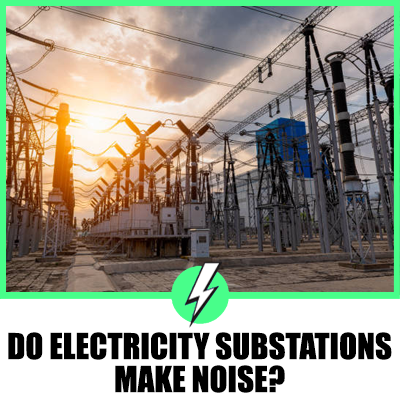Do Electricity Substations Make Noise? A Comprehensive Analysis for the UK and US
Electricity substations are an integral part of the power distribution system in both the United Kingdom and the United States.
They play a crucial role in stepping down high-voltage electricity from power plants to a lower voltage suitable for residential and commercial use.
However, these substations often generate a low-frequency hum, which can be a cause of concern for people living nearby.
This article delves into the reasons behind this noise, its potential health implications, and the safety of living near a substation.

Contents
Do Substations Make Any Noise?
Yes, electricity substations do produce noise.
The primary source of this noise is the transformers housed within the substations.
These transformers operate by changing the voltage of the electrical power supplied to them.
This process involves a magnetic field, which causes the transformer core and coil to vibrate, resulting in a characteristic hum.
The hum is typically in the low-frequency range, between 100Hz and 200Hz, and its volume can vary depending on the size and type of the transformer, as well as the load it is handling at any given time.
During the day, this hum is often masked by ambient noise from traffic and other sources.
However, in the quiet of the night, the hum can become more noticeable, particularly for those living in close proximity to a substation.
Is It Unhealthy to Live Near a Substation?
While the noise from substations can be a nuisance, particularly for those sensitive to sound or those living in otherwise quiet areas, there is currently no definitive scientific evidence to suggest that it is harmful to health.
However, it’s worth noting that noise sensitivity varies greatly among individuals.
What might be a minor annoyance to one person could be a significant disturbance to another, potentially affecting sleep quality and overall quality of life.
In addition to noise, some people have raised concerns about exposure to electromagnetic fields (EMFs) from substations.
However, according to the World Health Organization and other health bodies, the low-frequency EMFs produced by substations are not harmful to human health.
Why Do Electrical Substations Hum?
The hum from electrical substations is primarily due to the operation of transformers.
As alternating current (AC) passes through a transformer, it creates a magnetic field.
This magnetic field causes the transformer’s core and coil to vibrate, and it’s this vibration that produces the characteristic hum.
Interestingly, the frequency of the hum can vary depending on the country.
In the UK and most of Europe, the standard frequency for AC power is 50Hz, while in the US, it’s 60Hz.
This difference in frequency can result in a slightly different pitch to the hum produced by substations in these regions.
Is It Safe to Live Next to an Electricity Substation?
Living next to an electricity substation is generally considered safe.
However, as urban development expands and land availability shrinks, residential buildings are being constructed closer to existing and planned substations.
This proximity has led to increased efforts to mitigate the noise from substations.
Noise barriers and absorbers have been used to contain unwanted noise hum.
Innovative designs are also being developed to cut through current solution limitations, opening up the opportunity to develop land within 100 metres of substations.
Insights from Online Discussions
Online discussions reveal a range of experiences and opinions about living near substations.
Some people report being bothered by the noise, while others don’t notice it at all.
There are also discussions about the potential health risks of living near substations, with some people expressing concern about exposure to electromagnetic fields.
However, according to most health and scientific organizations, the low-frequency magnetic fields produced by substations are not harmful to human health.
Conclusion
Electricity substations, while essential to our modern lives, do produce a characteristic hum that can be noticeable, particularly in quiet environments.
While this noise can be a nuisance, it is generally not harmful to health.
Efforts are being made to reduce the noise from substations, particularly in areas where residential buildings are close to these facilities.
As our cities continue to grow and evolve, it will be important to balance the need for infrastructure with the desire for quiet, peaceful neighborhoods.





